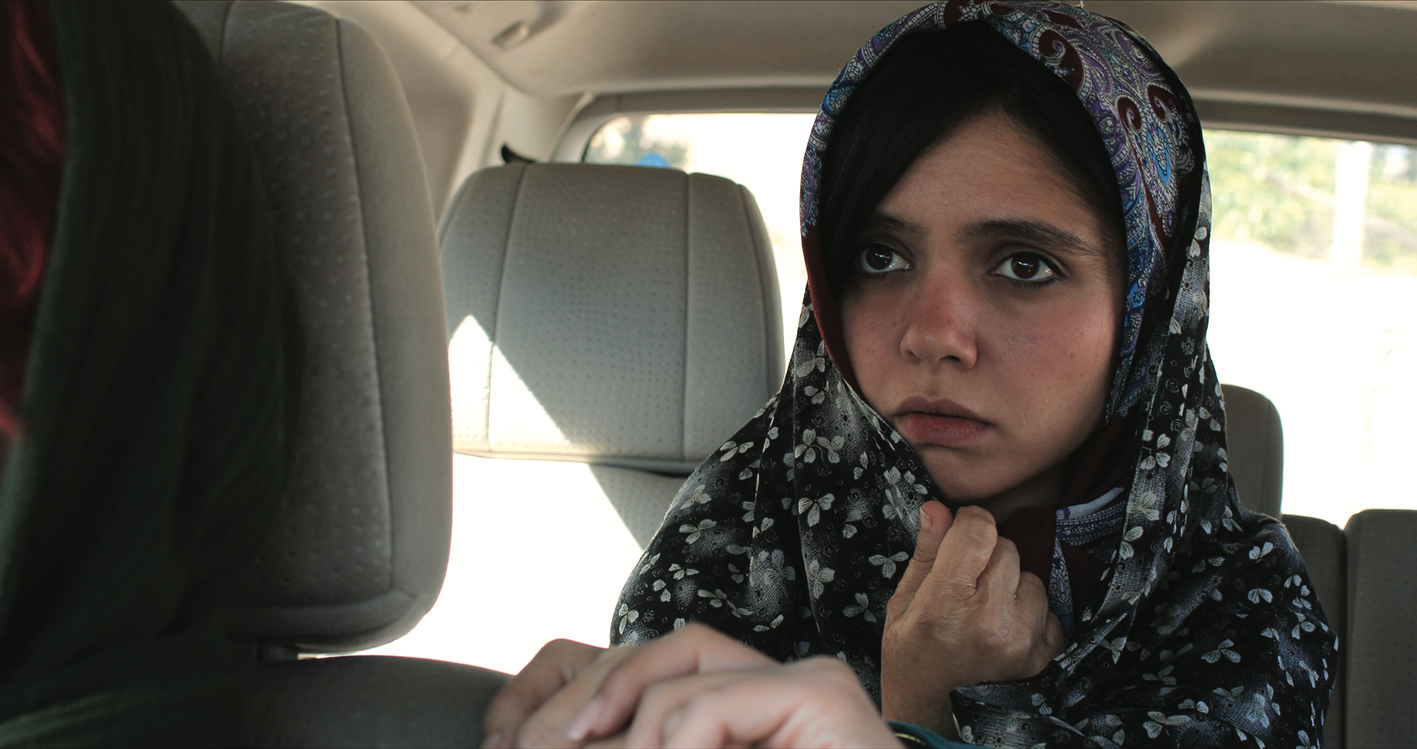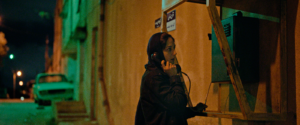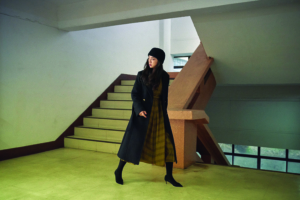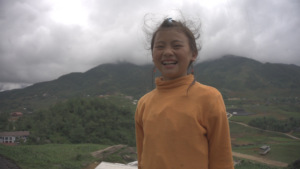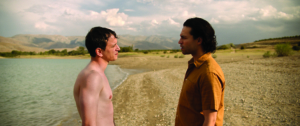The history of cinema is one defined by the tension between possibility and constraint: constraint, because filmmaking has so often wrestled with serious limitations, be they technical, commercial or political; and possibility, because, in the face of these challenges, artistry has nonetheless flourished, from the great achievements of the silent era to the radical and ambitious underground works that have emerged without the support of established funding bodies.[1]For a look at some of the recent achievements and ongoing challenges of underground cinema in a local context, see David Heslin, ‘Other Voices: Grace, Who Waits Alone and New Australian Underground Cinema’, Metro, no. 200, 2019, pp. 136–40. It’s hard to think of a contemporary figure in the film world who better embodies that struggle than Jafar Panahi – nor many other national cinemas that have served as a backdrop for it quite so acutely as that of his homeland, Iran. It’s fitting, then, that his latest work, 3 Faces (2018), has both of those at its centre: the plight of the artist-individual in a repressive environment, alongside the blotted-out history of the country’s nascent, pre-revolution cinema.
To those in the West who are familiar with him, Panahi is mostly known as the director who, in December 2010, was placed under house arrest, prevented from leaving Iran and banned from making films for twenty years.[2]See ‘Iranian Film-maker Jafar Panahi Gets Six-year Sentence’, BBC News, 20 December 2010, <https://www.bbc.com/news/world-middle-east-12045248>, accessed 1 June 2019. Long before this, however, he had established a reputation among cinephiles as one of Iran’s most formally brilliant and politically uncompromising filmmakers, something that the conservative authorities were no doubt eager to hobble. Since his sentence was handed down, he has nonetheless managed to continue to work discreetly, completing four feature films of increasing narrative and technical complexity. While these have all been somewhat makeshift by necessity – much of This Is Not a Film (2011) takes place in Panahi’s own apartment, and Taxi (2015) is filmed nearly entirely from a dash cam – 3 Faces, with its visual polish, intercutting and road-movie narrative, is the first to feel like a return to the scale of the work he made before his arrest.
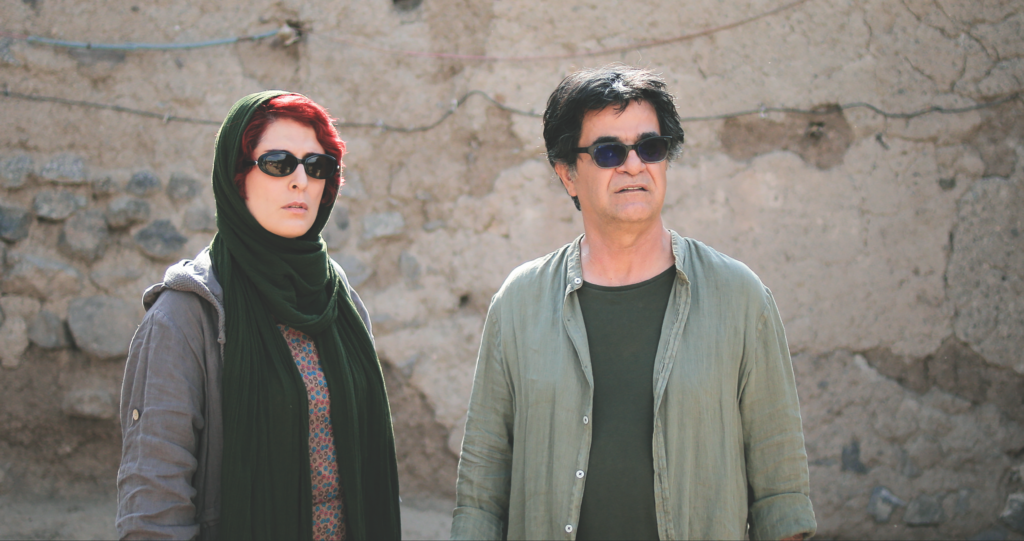
The film’s opening scene is a decidedly lo-fi exception: a grainy, vertically oriented mobile-phone recording by a teenage girl in a cave that culminates in her apparent suicide by hanging. Immediately after, we cut to Panahi and actress Behnaz Jafari, who have responded to receiving this footage (sent to the former, addressed to the latter) by driving to the girl’s stated location in the remote village of Saran, located near the director’s birthplace in Iran’s far-north-western province of East Azerbaijan. Far from easing the shock of the preceding sequence by settling us into a clearly fictional mode, this scene only blurs that line further: as they discuss the video in the car and express their uncertainty as to its veracity, it’s not fully clear that they’re acting, or whether he’s in on the ruse and she isn’t (a little while later, Jafari distrustfully reminds Panahi that ‘not long ago […] you said you were preparing a screenplay about suicide, with a role for me’). When the girl, Marziyeh (Marziyeh Rezaei), turns up later in the film unharmed, viewers are likely to experience it as a genuine relief.
Is Panahi merely toying with his audience here, or exploring something more profound? There’s a similar scene early in Taxi in which, after an argument between two passengers, a third recognises Panahi in the driver’s seat and gleefully denounces everything shown so far as a set-up – only for their conversation to be interrupted by frantic rapping on the door and a woman climbing into the taxi clutching a badly injured man and begging to be driven to a hospital. The fourth wall has been broken and, just as quickly, rebuilt. Of course, just like Panahi’s passenger, we suspect that this is all too perfect, all too obviously staged; but a part of us also recognises that the director is, at the time of filming, literally driving a taxi around the streets of Tehran, and that the prospect of real life intervening at any moment is, therefore, within the realm of possibility.
Such disorienting, postmodern tactics are a common feature in Panahi’s filmography. Perhaps the most extreme instance of this approach occurs in The Mirror (1997), in which, around forty minutes into a narrative about a lost child, the little girl playing the protagonist, Mina (Mina Mohammad Khani), abruptly decides that she doesn’t want to be in the film anymore and walks home, with Panahi tracking her journey from a distance on a handheld camera. We are left to wonder whether this second half of the film is a documentary that has been improvised on the spot, or whether what we’re seeing was scripted all along.[3]Panahi has indicated that the second half of the film was, indeed, planned: ‘With The Mirror […] I started to be concerned with the form. One idea is that in the middle of the film everything will change.’ See Panahi, quoted in Peter Rist, ‘In Real Time: An Interview with Jafar Panahi’, Offscreen, vol. 13, no. 11, November 2009, <https://offscreen.com/view/interview_panahi>, accessed 1 June 2019.
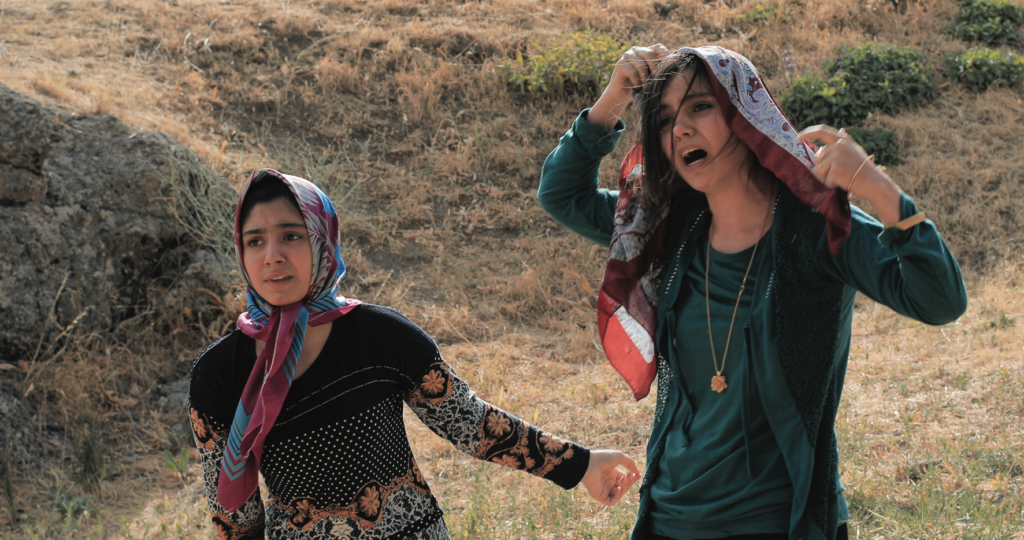
While The Mirror is one of Panahi’s least overtly political films, its liberation from filmic convention stands in direct opposition to the constraints that the Iranian government has sought to impose on his life. In that sense, 3 Faces’ Marziyeh serves as a mirror for Panahi himself: despite her acceptance into a prestigious acting conservatory in Tehran, her future in the film industry has been sabotaged by her conservative family, who – along with the rest of her community – consider her ambitions frivolous and improper. As with Panahi’s own post-filmmaking-ban experiments, her video is a desperate attempt to communicate something through the limited tools available to her, and what she makes is a similarly effective work of fiction that blurs the distinction between truth and artifice.
Unlike Marziyeh, Jafari is (as she is in real life) a popular, established TV and film actress whose career is under no threat, even though we learn at the beginning of the film through an angry phone call from another director[4]Again, real life creeps in: a cursory search of the Internet Movie Database (IMDb), alongside the acknowledgements in 3 Faces’ credits, suggests that Jafari really was shooting another film – The Old Road (Manijeh Hekmat, 2018) – around the time 3 Faces was made, and that it is likely Hekmat’s voice that we overhear on the phone. that she has abandoned a shoot without warning to accompany Panahi on his search; evidently, the production depends more on her than she does on it. Even in the rustic, Azeri-speaking village of Saran – where her sunglasses and brightly dyed red hair emerging from under her hijab immediately mark her as an outsider – she is, on her first arrival, immediately recognised and mobbed like a celebrity. Nonetheless, it soon becomes apparent that the locals’ interest in Jafari is motivated less by reverence than by material concerns: they express hope that her and Panahi’s visit can somehow be leveraged to repair the village’s ailing infrastructure, and immediately disperse in disgust when she asks for information about Marziyeh.
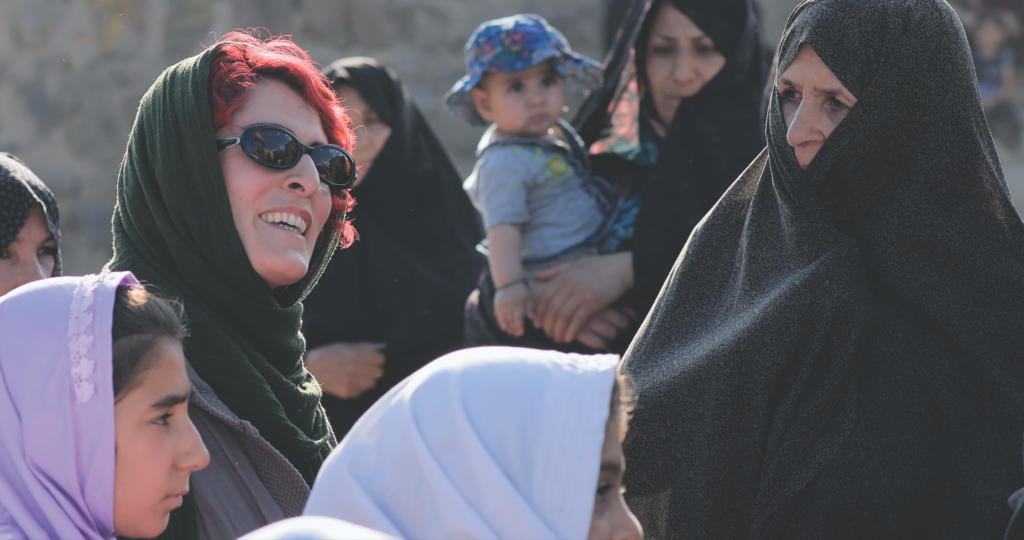
Marziyeh, we learn, is hiding out in the house of a fellow village pariah, elderly pre-revolution movie star Shahrzad, and it’s at this point that the meaning of 3 Faces’ title becomes clear. Each of these actresses represents a different generation, a different period of Iranian cinema: its past, present and future. Yet the film’s title also contains a telling paradox: the third face, Shahrzad’s, is never seen; instead, we catch her as a silhouette, or a disembodied voice through a car’s CD player, or a figure seen from a distance. Like the formative Iranian cinema that she represents, she is defined by her absence.
Shahrzad, born Kobra Saeedi, was a key figure in the Iranian film industry of the late 1960s and 1970s. One of her first roles was a bit part in one of the most famous pre-revolution films, the pulpy revenge drama Gheisar (Masud Kimiai, 1969), in which, in a climactic sequence, she performs an erotic dance in a nightclub;[5]The lead actor of Gheisar, Behrouz Vossoughi, is also referred to in 3 Faces when a villager holds up a poster of him as a symbol of virility. in later years, she had key roles in popular thrillers such as The Morning of the Fourth Day (Kamran Shirdel, 1972) and Strait (Amir Naderi, 1973), before turning to directing with Maryam and Mani (1979). That same year, her career, along with much of the industry to which she belonged, was swept away by the Islamic Revolution, whose leaders ushered in a strict censorship regime[6]In Taxi, Panahi’s young niece Hana begins to list some of the requirements that are placed on Iranian films in order for them to be considered for distribution: ‘respect of Islamic headscarf, no contact between men and women, avoid sordid realism, avoid violence, avoid the use of a tie for good guys …’ See also Charles Recknagel, ‘Islamic Revolution Can’t Upstage Iranian Cinema’, Radio Free Europe / Radio Liberty, 10 February 2014, <https://www.rferl.org/a/iran-islamic-censorship-cinema/25259188.html>, accessed 1 June 2019. and banned those whose earlier work was deemed to have contravened it.[7]New Wave Films, 3 Faces press kit, 2019, p. 8. While a more auteurist Iranian cinema, spearheaded by directors such as Abbas Kiarostami, Mohsen Makhmalbaf and Panahi, achieved international acclaim in the 1980s and 1990s, it was one that, more often than not, featured non-professional actors and (not always successfully) tried to dodge censorship through allusion and understatement;[8]Recknagel, op. cit. Shahrzad, and many others like her, meanwhile, were ostensibly erased from the country’s cinematic history.
While the spectre of national authoritarianism is present under the surface of 3 Faces, the more tangible oppression seen in the film is wielded by the patriarchal, traditionally minded community of Saran.
While the spectre of national authoritarianism is present under the surface of 3 Faces, the more tangible oppression seen in the film is wielded by the patriarchal, traditionally minded community of Saran. Here, Panahi’s motivations seem less clear: once Marziyeh is discovered alive and well, halfway in, most of the tension is sucked out of the narrative; the film exchanges the political urgency of Panahi’s earlier work for a more whimsical, ethnographic tone, with the villagers portrayed as superstitious but otherwise hospitable and well-meaning. The only serious source of threat is Marziyeh’s brother (Mehdi Panahi), who seems to exist in a near-permanent state of rage at his sister’s perceived impropriety. To be sure, his anger is a frightening reminder of female powerlessness in cultures in which male siblings are often called upon to enforce family honour.[9]See Hillary Mayell, ‘Thousands of Women Killed for Family “Honor”’, National Geographic, 12 February 2002, <https://www.nationalgeographic.com/culture/2002/02/thousands-of-women-killed-for-family-honor/>, accessed 1 June 2019. But this character is scarcely a representative of local, let alone broader structural, male power; rather, he is a pathetic, emasculated figure, humiliated by his mother by being locked in his room and later pushed out the front door by his father when Marziyeh returns home. Nonetheless, he is also the character who poses the most immediate threat to the wellbeing of the women in the film, and is responsible for 3 Faces’ only moment of overt (off-screen) violence, albeit one that’s played for laughs: cracking the windscreen of the director’s car with a rock.
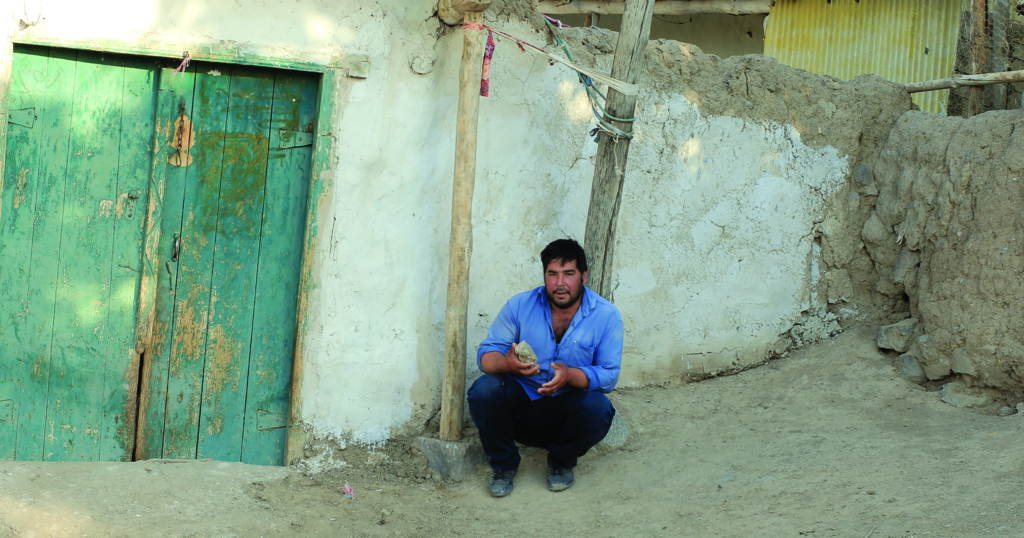
In the end, the three women end up together, dancing and talking through the night at Shahrzad’s house, before Jafari returns to Tehran and her life as an actress; we see her and Marziyeh walking off into the distance together just before the credits roll. There’s no doubt that, with its critique of the patriarchal constraints placed upon women in Iranian society, 3 Faces is a film with explicitly feminist intent. This is in keeping with the preoccupations of the director’s earlier, most fiercely political works: in Offside (2006), girls attempting to watch a soccer game in disguise are caught and kept in a holding pen in the stadium, only able to follow the progress of the game through the roars of the crowd, while The Circle (2000), a film made up of vignettes about various forms of oppression experienced by women in Iran, concludes in a prison cell that mirrors the hospital room in which a baby girl is born in the opening sequence.
What most clearly sets his post-arrest work apart from his earlier films is that Panahi himself has become a protagonist … his ongoing presence and dependence on factual elements helps these more recent films to function as a kind of coherent series.
Though the title of his latest film is a reference to its three female leads, there is, nonetheless, at least one other face to consider here: Jafar Panahi’s. Even before his arrest, the director was already making films under straitened conditions; for instance, in order to gain a permit to shoot Offside, the director ‘wrote a fake script under someone else’s name [… and] shot the film in secrecy’,[10]Jafar Panahi, quoted in Jennifer Merin, ‘Jafar Panahi Chats with Jennifer Merin re Offside’, Alliance of Women Film Journalists, 11 March 2007, <https://awfj.org/blog/2007/03/11/jennifer-merin-interviews-jafar-panahi-re-offside/>, accessed 1 June 2019. while his first two features, The White Balloon (1995) and The Mirror, both revolved around child protagonists because he felt that such narratives were ‘less prone to censorship’[11]Jafar Panahi, quoted in Doug Saunders, ‘My Interview with Jafar Panahi’, Doug Saunders official website, 23 May 2007, <http://www.dougsaunders.net/2007/05/interview-jafar-panahi-iran/>, accessed 1 June 2019. (to this day, The White Balloon is his only film not to have been banned in Iran[12]Celluloid Dreams, Taxi press kit, 2015, p. 9.). But what most clearly sets his post-arrest work apart from his earlier films is that Panahi himself has become a protagonist.[13]His only previous appearance in his own films was in the key transition sequence of The Mirror, in which he is briefly seen discussing how to handle Mina’s defection with his crew; there, he is arguably less a character than part of a formalist exercise. This was a clear necessity in the two features made when he was still under house arrest, This Is Not a Film and Closed Curtain (2013), and the intimate shooting conditions of Taxi more or less required that he be in the (literal) driver’s seat; for 3 Faces, on the other hand, Panahi initially considered another performer for the main male role, but stepped in when those plans fell through.[14]New Wave Films, op. cit., p. 7. Clearly, this is more than a mere exchange of one face for another; the narrative of 3 Faces remains at least partially shaped around its director’s presence.
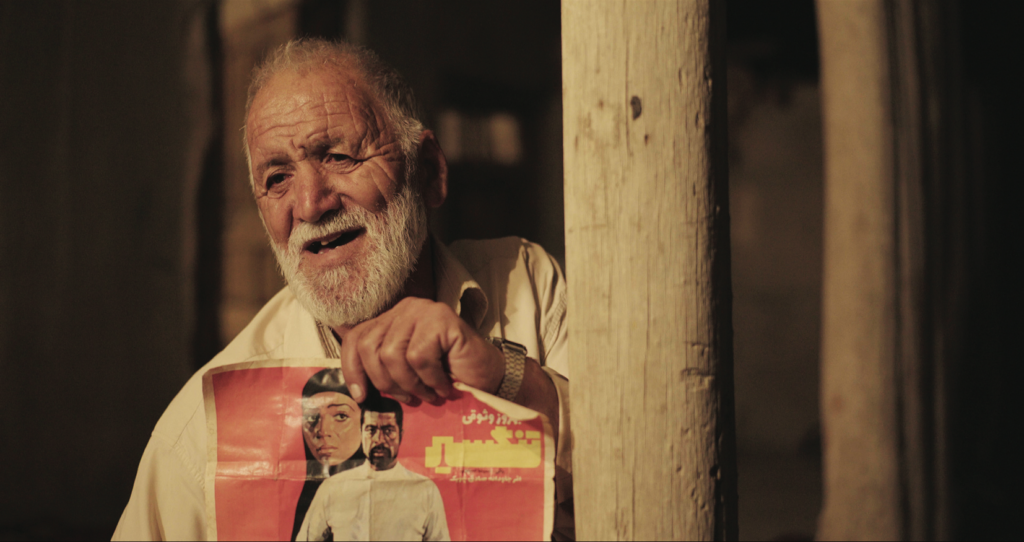
Many directors have chosen to appear in their own films, but there is a distinction to be made between those who tend to play discrete characters (even if they can be read as thinly veiled versions of themselves), such as Woody Allen (as in Annie Hall, 1977) and Lena Dunham (as in Tiny Furniture, 2010), and those who have more explicitly embedded themselves within their own fictional narratives, such as Lars von Trier (as in Epidemic, 1987) and Nanni Moretti (as in Dear Diary, 1993). Panahi’s post-arrest films very much exist within the second category; indeed, his ongoing presence and dependence on factual elements helps these more recent films to function as a kind of coherent series, with Panahi-the-character serving as its anchoring point.
What is curious about these works, particularly Taxi and 3 Faces, is the narrative that exists beyond them. In neither, after all, is Panahi’s specific legal situation spelled out, or his status as a famous film director explicitly invoked, and yet one gets the sense that the audience is expected to be aware of this context. In Taxi, human-rights lawyer and activist Nasrin Sotoudeh refers to the fact that she and Panahi have both previously conducted hunger strikes in prison; likewise, outside Shahrzad’s house in 3 Faces, the director assures Jafari that he’ll be okay spending the night in the car: ‘I’m safer here than anywhere else.’ Ultimately, these nods to the director’s real-life struggle seem less like attempts to create a character serving a narrative than acts of self-portraiture.
That Panahi continues to make films in spite of his ban, winning major awards at international festivals such as Berlin and Cannes along the way, seems an uneasy, unsustainable dynamic. His filmmaking trajectory since 2010 has had a rehabilitative quality to it, as if he is learning to walk again after major surgery; perhaps, soon, Panahi will be able to step fully behind the camera again and wholly return to the ambitious scope and explicit political charge of his earlier work – or, equally, perhaps the Iranian government is merely waiting for him to step over an arbitrary line before they close in again. As it stands, the director is ‘wary of calling more attention to himself’: as per the conditions of his sentence, he has not taken part in media interviews about his films since 2010, and he continues to shoot in a clandestine manner, without permits.[15]See Rachel Donadio, ‘Jafar Panahi, Iranian Filmmaker, Persists Despite a Ban’, The New York Times, 24 September 2015,<https://www.nytimes.com/2015/09/27/movies/jafar-panahi-iranian-filmmaker-persists-despite-a-ban.html>, accessed 1 June 2019. As Sotoudeh – who is herself in jail again, serving a twelve-year sentence for having offered legal aid to progressive activists[16]‘Iran Rights Lawyer Won’t Appeal New Jail Ruling: Husband’, France 24, 17 March 2019,<https://www.france24.com/en/20190317-iran-rights-lawyer-wont-appeal-new-jail-ruling-husband>, accessed 1 June 2019. – says in Taxi of the oppressive treatment of nominally ‘free’ political dissidents in Iran, ‘When you finally get released, the outside world becomes a bigger cell.’
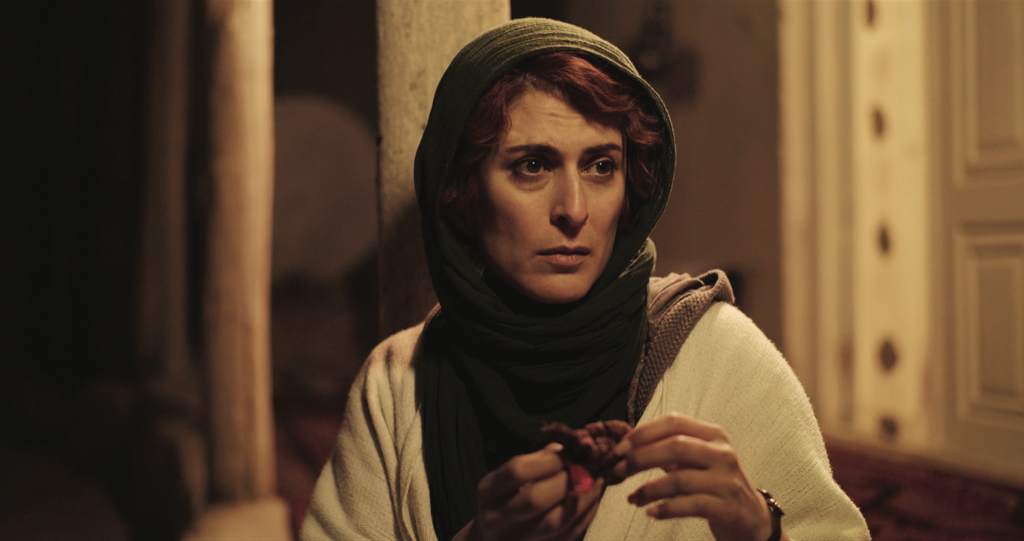
In the classic US underground work David Holzman’s Diary (Jim McBride, 1967), the titular would-be filmmaker (played by LM Kit Carson) shoots everything that surrounds him. Aside from the grainy quality of the monochrome footage spat out by his handheld 16mm camera, he has no constraints on what he can film or what ideas he can communicate; his is as close to a cinema of freedom as is conceivable. Yet, amid so much possibility, he fails to make anything of artistic merit, and allows his obsession to all but destroy his life in the process. Finally, having lost everything else he cares about, he turns the camera on himself.
This film shares a strikingly similar ending to Taxi: in the former, David’s apartment is burglarised, and all his equipment is stolen; in the latter, Panahi’s cab is smashed and looted, with the thief making off with the dash cam. Both films end in darkness, each filmmaker-character having lost the capacity to create images. 3 Faces, too, ends with a car being damaged – courtesy of Marziyeh’s brother – but, this time, the front windscreen is only cracked, and otherwise unbroken. Panahi drives on.
Endnotes
| 1 | For a look at some of the recent achievements and ongoing challenges of underground cinema in a local context, see David Heslin, ‘Other Voices: Grace, Who Waits Alone and New Australian Underground Cinema’, Metro, no. 200, 2019, pp. 136–40. |
|---|---|
| 2 | See ‘Iranian Film-maker Jafar Panahi Gets Six-year Sentence’, BBC News, 20 December 2010, <https://www.bbc.com/news/world-middle-east-12045248>, accessed 1 June 2019. |
| 3 | Panahi has indicated that the second half of the film was, indeed, planned: ‘With The Mirror […] I started to be concerned with the form. One idea is that in the middle of the film everything will change.’ See Panahi, quoted in Peter Rist, ‘In Real Time: An Interview with Jafar Panahi’, Offscreen, vol. 13, no. 11, November 2009, <https://offscreen.com/view/interview_panahi>, accessed 1 June 2019. |
| 4 | Again, real life creeps in: a cursory search of the Internet Movie Database (IMDb), alongside the acknowledgements in 3 Faces’ credits, suggests that Jafari really was shooting another film – The Old Road (Manijeh Hekmat, 2018) – around the time 3 Faces was made, and that it is likely Hekmat’s voice that we overhear on the phone. |
| 5 | The lead actor of Gheisar, Behrouz Vossoughi, is also referred to in 3 Faces when a villager holds up a poster of him as a symbol of virility. |
| 6 | In Taxi, Panahi’s young niece Hana begins to list some of the requirements that are placed on Iranian films in order for them to be considered for distribution: ‘respect of Islamic headscarf, no contact between men and women, avoid sordid realism, avoid violence, avoid the use of a tie for good guys …’ See also Charles Recknagel, ‘Islamic Revolution Can’t Upstage Iranian Cinema’, Radio Free Europe / Radio Liberty, 10 February 2014, <https://www.rferl.org/a/iran-islamic-censorship-cinema/25259188.html>, accessed 1 June 2019. |
| 7 | New Wave Films, 3 Faces press kit, 2019, p. 8. |
| 8 | Recknagel, op. cit. |
| 9 | See Hillary Mayell, ‘Thousands of Women Killed for Family “Honor”’, National Geographic, 12 February 2002, <https://www.nationalgeographic.com/culture/2002/02/thousands-of-women-killed-for-family-honor/>, accessed 1 June 2019. |
| 10 | Jafar Panahi, quoted in Jennifer Merin, ‘Jafar Panahi Chats with Jennifer Merin re Offside’, Alliance of Women Film Journalists, 11 March 2007, <https://awfj.org/blog/2007/03/11/jennifer-merin-interviews-jafar-panahi-re-offside/>, accessed 1 June 2019. |
| 11 | Jafar Panahi, quoted in Doug Saunders, ‘My Interview with Jafar Panahi’, Doug Saunders official website, 23 May 2007, <http://www.dougsaunders.net/2007/05/interview-jafar-panahi-iran/>, accessed 1 June 2019. |
| 12 | Celluloid Dreams, Taxi press kit, 2015, p. 9. |
| 13 | His only previous appearance in his own films was in the key transition sequence of The Mirror, in which he is briefly seen discussing how to handle Mina’s defection with his crew; there, he is arguably less a character than part of a formalist exercise. |
| 14 | New Wave Films, op. cit., p. 7. |
| 15 | See Rachel Donadio, ‘Jafar Panahi, Iranian Filmmaker, Persists Despite a Ban’, The New York Times, 24 September 2015,<https://www.nytimes.com/2015/09/27/movies/jafar-panahi-iranian-filmmaker-persists-despite-a-ban.html>, accessed 1 June 2019. |
| 16 | ‘Iran Rights Lawyer Won’t Appeal New Jail Ruling: Husband’, France 24, 17 March 2019,<https://www.france24.com/en/20190317-iran-rights-lawyer-wont-appeal-new-jail-ruling-husband>, accessed 1 June 2019. |
